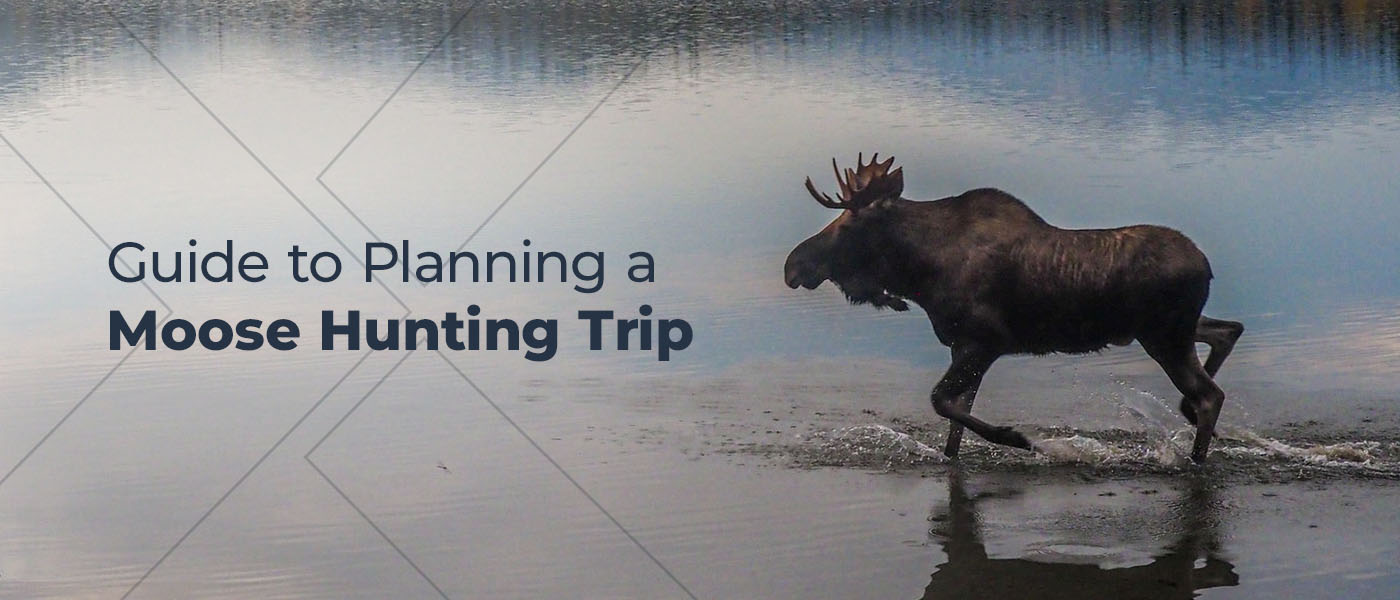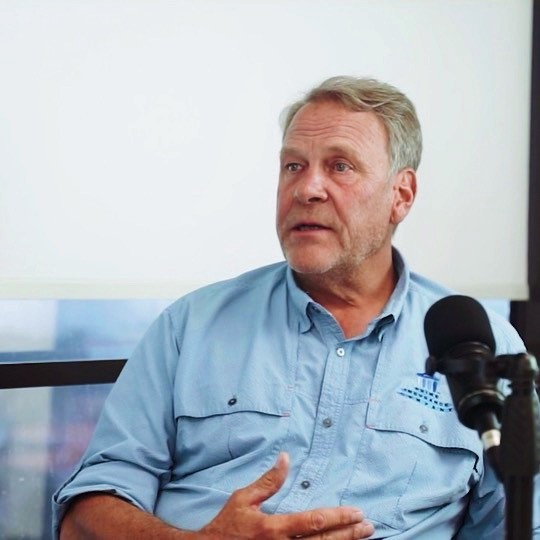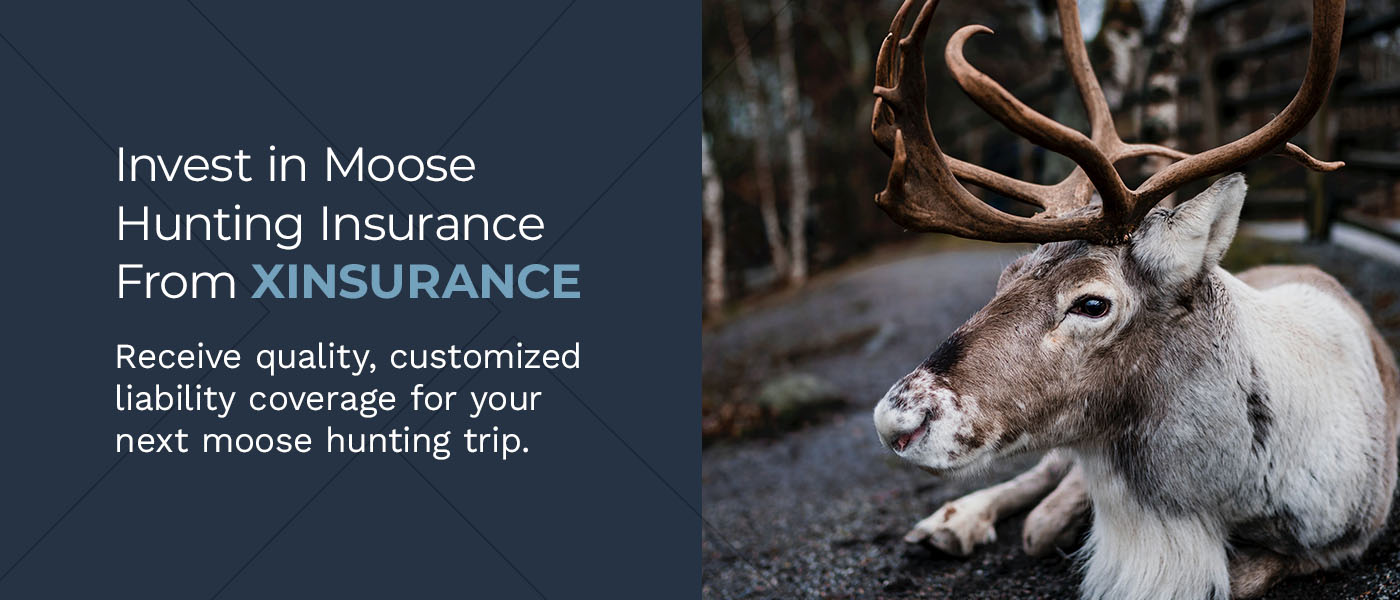
Guide to Planning a Moose Hunting Trip
Moose is a popular large game amongst hunters. Their large antlers make impressive trophies that hunters can display in their homes, and their large bodies can provide a significant amount of meat. While moose aren’t predators and typically prefer to avoid humans, they can be extremely dangerous if provoked. If you plan to pursue this prized wild game, you should take care to prepare and practice safe hunting habits.
How to Plan for a Moose Hunt
It is essential to consider moose hunting safety when planning your hunting trip. With proper planning and safety procedures, you can make the most of your hunting time and increase your chances of returning home with a great trophy.
Know Your Moose
There are three different varieties of moose, distinguished by their size and location. When planning your moose hunting trip, learn the differences between the different types of moose so you can decide where you want to hunt:
- Yukon: Also called the Alaskan moose, the Yukon moose is the largest of the species. Hunters can find them in Alaska and the Canadian territories of Yukon and northwestern British Columbia.
- Canadian: This moose has northwestern and eastern populations located within the northern parts of Michigan, Minnesota, Wisconsin, the northeastern U.S. states and the majority of Canada. It is the second-largest moose variety.
- Shiras: A moose variety found in the mountainous regions of the western U.S. and areas within southeast British Columbia and Alberta.
Obtain a Moose Hunting Tag
After you determine where you want to hunt, you will need to obtain a tag allowing you to hunt moose legally in that region. Depending on the state or territory, you may need to apply and wait for a tag, so be sure to plan your trip far in advance. You may also want to consider more than one option — in 2021, popular hunting destination Maine issued only 4,000 moose hunting tags.
Research Moose Hunting Restrictions
To help ensure the safety of cows and calves and promote population maintenance, most states require that moose hunters only harvest mature bulls. Because of this, states will publish their specific qualifications for a mature bull based on antler spreads and brow tines. Alaska has fairly restrictive requirements, asking hunters to only harvest bulls with a 50-inch antler spread or three brow tines. Because it is challenging to measure antler spread from a distance, most hunters count brow tines instead.
Prepare for All Weather
When planning your moose hunting trip, prepare for all possible weather conditions. Since moose live in colder regions that are more prone to snowstorms, invest in warm, durable outdoor clothing that can withstand harsh conditions. Waterproof clothes and shoes can further help you protect yourself from the cold.
If you are not familiar with the area where you are hunting, it’s best to scout the location beforehand during good weather conditions. Make sure to note any roads or dangerous terrain to help prepare you for a safe moose hunt.
Invest in Proper Equipment
Good equipment is a must for keeping you and your hunting party safe during a moose hunt, especially if the weather outlook indicates poor conditions. Keeping up-to-date maps, a functional compass and satellite radio can help prepare you for the unexpected during your moose hunting expedition. Radio is beneficial in allowing you to reach outside help during an emergency and receive important information.
When hunting moose, having adequate firepower is vital in making a clean, ethical kill. The New Hampshire Fish and Game Department recommends ammunition with a minimum bullet weight of 150 grains and 2,200 foot-pounds of muzzle energy for moose hunts. Be sure to choose a bullet engineered for large game hunting and spend plenty of time practicing with your rifle of choice before the trip — you may only get one shot on that once-in-a-lifetime trophy animal, so it pays to be prepared.
Depending on where you hunt, you may be able to use black powder firearms or archery equipment as well. Know the local laws and make sure you’re competent with your weapon of choice.
Recognize Moose Tracks
Before venturing out on your moose hunting trip, be sure to recognize the signs of moose movement. Moose are very mobile creatures that can graze on land and swim in nearby bodies of water to reach aquatic plants. While you familiarize yourself with your hunting area, take the chance to spot any signs of moose activity, like tracks, droppings and antler marks on tree bark.
Set up Glassing Structures
Moose hunters typically use optics to observe and harvest moose from a distance. Depending on your hunting area, your glassing structure can take a lot of different forms. Many hunters set up in trees or on hills for natural elevation. If you are near a river or another flat area, there are artificial glassing structures you can set up to help you spot a moose.
When determining a spot for glassing, it’s best to set up around a site with signs of moose activity or where a moose may appear, like areas hosting their preferred vegetation.
Use Calls to Draw Moose
Investing in high-quality calls can help bring moose right to you. Depending on the time of the season, hunters can switch between common calls that help you project and imitate various sounds that moose make to communicate, such as:
- Nonthreatening bull calls
- Bull challenge yells
- Cow calls
Finding a good call that works for you will help you find moose more efficiently while on your hunt. Experienced hunters can also use antlers from old hunts to imitate antler scraping on nearby trees, which may provoke a response from any bulls close enough to hear. When calling, be sure to wait long enough before moving to a new location since moose have excellent hearing and will travel toward tempting noises.
Talk to a Professional
Many hunters choose to harvest moose because of their meat, fur or antlers. For those interested in harvesting moose products after their hunt, it is beneficial to talk to a professional taxidermist about the best methods of removing various parts. If you want to preserve your trophy’s antlers or have a larger mount, a taxidermist will help you determine how much of the animal you need to preserve for the best results.
If you book your hunt with a guide service, they will be able to offer plenty of valuable moose hunting tips and can walk you through fur removal and meat preservation methods to best protect your harvest from warm weather or flies — for example, black pepper is great for deterring flies from your moose meat.
Know Where to Aim
Moose are powerful creatures. They can reach weights of over 1,000 pounds, and bulls can grow antlers that span over 6 feet — it is common for hunters to need multiple shots when taking down a moose because of their size. However, a wounded and defensive moose can charge at hunters, causing severe injuries. Taking your time and focusing on shot placement to strike the lungs or heart can maximize your efforts and protect you and your party.
Invest in Moose Hunting Insurance From XINSURANCE
Hunting for moose can be a rewarding and exhilarating experience that leaves you with an impressive trophy and delicious meat at the end, so you want to cover all your bases. When hunting for moose, it is essential to protect yourself from liability with a good hunting insurance plan. Insure yourself with XINSURANCE to receive quality, customized liability coverage for your next moose hunting trip.
Contact XINSURANCE about our hunting insurance plans today and discover how we can help protect you.

Rick J. Lindsey hails from Salt Lake City, Utah. He began working in the mailroom of his father’s Salt Lake City insurance firm, getting his introduction to the business that became his lifelong career. Rick J. Lindsey quickly rose through the ranks while working in nearly every imaginable insurance industry job. As an entrepreneur, specialty lines underwriter, claims specialist, risk manager, and a licensed surplus lines broker, Rick J. Lindsey is highly skilled in all levels of leadership and execution. As he progressed on his career path, Rick J. Lindsey discovered an urgent need for insurers willing to write policies for high-risk individuals and businesses. He was frequently frustrated that he could not provide the liability protection these entities desperately needed to safeguard their assets. He also formed the belief that insurance companies acted too quickly to settle frivolous claims. Rick J. Lindsey decided to try a different approach. He started an insurance company and became the newly formed entity’s CEO. This opportunity has enabled Rick J. Lindsey to fill a void in the market and provide a valuable service to businesses, individuals, and insurance agents who write high-risk business. XINSURANCE also specializes in helping individuals and businesses who live a lifestyle or participate in activities that make them difficult for traditional carriers to insure. If you’ve been denied, non-renewed, or canceled coverage, don’t give up quite yet. Chances are XINSURANCE can help.



